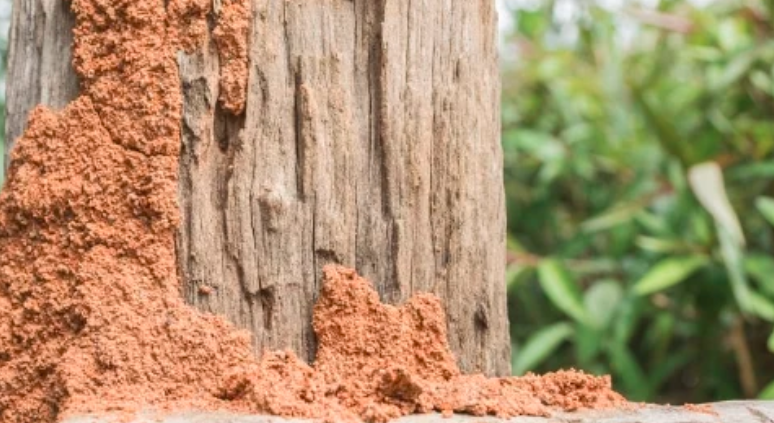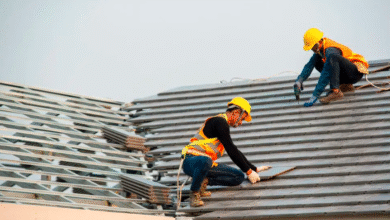Signs You Need Immediate Termite Treatment in Your Home

Termites are silent destroyers. By the time you notice damage, they’ve often been feasting for months. That’s why spotting the early warning signs of termites can save your home – and your bank balance.
In Australia, termites cause more damage to homes than fire, storms, and floods combined. And unlike other pests, they don’t make noise, leave obvious trails, or politely announce their arrival.
So, how do you know when to act? This guide covers the subtle clues, what to look for, and when to call in the experts before your walls start crumbling.
Why Termite Damage Is So Dangerous
Most termites live underground or inside walls. They build tunnels and hollow out wood from the inside – without breaking the surface.
That means you often don’t see them until it’s too late.
Termites can:
- Weaken timber frames
- Damage skirting boards, floors, and ceilings
- Compromise wall supports
- Cause thousands in structural repairs
- Lower your property’s resale value
And here’s the kicker – most home insurance policies don’t cover termite damage.
That’s why learning the early warning signs of termites is critical.
1. Hollow-Sounding Timber
Knock on your skirting boards, floors, or window frames. If they sound hollow, it may not be age – it could be early stage termite damage in drywall or timber erosion.
Termites eat timber from the inside out. What’s left is a paper-thin shell that sounds empty when tapped.
Common spots to check:
- Windowsills
- Floorboards
- Architraves
- Wall studs and door frames
If it feels spongy or flakes easily, it’s time to call pest control.
2. Mud Tubes or Tunnels
One of the most obvious early warning signs of termites is termite mud tubes.
These are narrow, earth-coloured tunnels that termites build along walls, stumps, or bricks to stay protected as they travel.
See also: Affordable and Flexible Mobile Storage Options in Box Hill
They’re often:
- About the width of a pencil
- Found along the side of concrete slabs
- On brick foundations, garden beds, or subfloors
- Hidden behind furniture or stored boxes
Termites need moisture and protection. These tubes offer both. If you find even one, book a professional termite treatment ASAP.
3. Tiny Holes in Walls or Timber
Termite holes are small, pin-sized openings that might appear in plaster, walls, or timber.
They’re created when termites push out waste (called frass) or seal off entry points.
Look for:
- Tiny dots or bubbles on painted surfaces
- Gritty powder near timber
- Holes with fine soil or dust around them
They can easily be mistaken for general wear – until it’s too late.
4. Piles of Droppings (Frass)
If you see strange black or brown pellets near windowsills, cupboards, or cracks, you may be looking at termite droppings.
Drywood species (though less common in Australia) leave behind visible piles of frass. These are often confused with sawdust or coffee grounds.
Drywood termites droppings are:
- Dry, grainy, and uniform in shape
- Often found under infested wood
- Signs the colony is inside the timber
While subterranean termites don’t leave droppings the same way, any unexplained debris near timber should raise concern.
5. Doors or Windows That Stick
Is your door suddenly hard to close? Does a window feel like it’s swollen shut?
Moisture from termite activity can warp timber frames, making them expand and jam. If there’s no recent rain or humidity spike, it could be internal damage from termites.
Don’t assume it’s just your old Queenslander “settling.” It might be one of the early warning signs of termites lurking behind the paint.
6. Peeling Paint or Bubbled Walls
Termite damage can mimic water damage. That includes:
- Bubbling or flaking paint
- Soft patches on walls
- Stained or discoloured plasterboard
- Sagging drywall
Early stage termite damage drywall often looks like a moisture issue. But if you’ve ruled out leaks, termites might be to blame.
7. Clicking Noises in Walls
At night, in a quiet room, you might hear soft clicking or rustling behind the plaster.
That’s soldier termites banging their heads to signal danger. Or workers chewing through timber nonstop.
It’s subtle. But once you hear it, it’s hard to ignore.
8. Discarded Wings Near Windows
During swarming season (usually spring), winged termites (alates) leave the colony to mate and start new nests.
They’re attracted to light, so you’ll often find:
- Small wings near windowsills or doors
- Swarmers flying around light fittings
- Piles of discarded wings near entry points
Even if you don’t see the bugs, wings mean a colony could be nearby.
What to Do if You Spot These Signs
Act fast. Termites don’t take weekends off.
- Don’t disturb them – Avoid spraying or moving infested items. This can cause termites to relocate deeper into your home.
- Call in the pros – A licensed pest control expert can inspect, confirm the species, and create a treatment plan.
- Schedule a full property inspection – Damage may extend beyond what you see. Professionals use moisture meters, thermal imaging, and experience to assess the full extent.
- Begin treatment and protection – Whether it’s baiting systems, soil treatments, or physical barriers, don’t delay.
Why Professional Termite Treatment Is Essential
DIY isn’t enough. Termites don’t live where you spray – they live underground or deep inside walls.
Professional termite treatment ensures:
- Full colony elimination
- Protection against re-entry
- Long-term monitoring and barrier systems
- Peace of mind with warranties and follow-ups
How to Stay Protected Year-Round
After treating termites, prevention is key. Here’s how to stay ahead:
- Schedule yearly termite inspections
- Keep garden beds and mulch away from walls
- Fix leaks quickly – Termites love moisture
- Use termite-resistant materials during renovations
- Avoid storing timber against your home’s exterior
- Trim trees or branches touching the house
Proactive checks help catch problems early – before they eat through your investment.
Final Thoughts
Catching the early warning signs of termites could mean the difference between a small fix and a $50,000 rebuild.
Listen to your walls. Watch for frass, mud tubes, or warping timber. And if you even suspect termite activity, don’t wait.
Let the experts handle it. Reach out to trusted professionals at Allstate Pest Control for full inspections, diagnostics, and effective termite treatment tailored to your home.
Because when it comes to termites – early action isn’t just smart. It’s essential.


